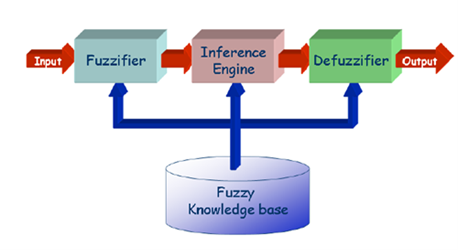Fuzzy logic-based Control for Intelligent Traffic Systems
Keywords:
Fuzzy Logic, arduino, traffic system, ultrasonic sensorsAbstract
In the realm of traffic management, conventional systems often rely on manual intervention at junctions, leading to inefficiencies and stress for commuters. This manual approach causes mental strain for passengers and results in significant fuel wastage due to delays at traffic junctions. Intelligent Traffic Systems (ITS) have long been recognized as effective tools for mitigating traffic congestion and improving traffic flow. By combining hardware and software techniques, ITS can monitor traffic movements and optimize signal timings to alleviate congestion. The cost-effectiveness of ITS is significantly influenced by the method used for traffic data collection. Utilizing ultrasonic and IR sensors for traffic flow measurement has been proposed as a means to reduce installation and maintenance expenses while enhancing system efficiency. This paper presents the design and implementation of an intelligent traffic lights controller utilizing fuzzy logic. By integrating roadside sensors and an Arduino Mega interface with ultrasonic sensors, the system dynamically adjusts traffic signals to manage congestion effectively. Implementing this system at intersections not only eliminates the need for manual traffic control but also reduces overall wait times compared to traditional traffic control systems.
References
A. P. R. L. Richard Arnott, „Transportation Research,” pp. 309-318, September 1991.
S. M. Shinde, „Adaptive traffic light control system,” in International Conference on Intelligent Systems and Information Management (ICISIM), Aurangabad, India, 2017.
U. d. o. transportation, „Traffic Congestion and Reliability: Linking Solutions to Problems,” Federal highway adminstration , United States, 2017.
M. PengjunZhenga, „An investigation on the manual traffic count accuracy,,” in International conference on traffic and transportation studies, 2012.
U. D. o. transportation, „A Summary of Vehicle Detection and Surveillance Technologies use in Intelligent Transportation Systems,” https://www.fhwa.dot.gov/policyinformation/pubs/vdstits2007/05pt2.cfm.
J. A.-O. R.Weil, „mathmetical and comuputer modeling,” Traffic incident detection: Sensors and algorithms, pp. 257-291, may-june 1998.
N. P. e. a. K. Thatsanavipas, „Wireless Traffic Light Controller,” in International Science, Social Science, Engineering and Energy Conference,, Nakhonphanom, Thailand., 2010.
S. V. M. Ashok. P.V, „International Journal of Applied Engineering Research,” %1. kötet12, 2017.
Hamara Chaudhuri, Nishanth P Raikar, „Traffic Control Management with help of State of Control Algorithm using Ultrasonic Sensors & GSM Technology,” International Research Journal of Engineering and Technology, %1. kötet05, %1. szám04, 2018.
The Arduino Mega 2560. (2024, March 11). https://docs.arduino.cc/hardware/mega-2560/.
Ultrasonic Sensor HC-SR04 and Arduino – Complete Guide. (2017, April 11). https://howtomechatronics.com/tutorials/arduino/ultrasonic-sensor-hc-sr04/.
Mullapudi, Chaitanya. (2020). Implementation of Arduino-Based Counter System. International Journal of Engineering and Technical Research. 9. 10.17577/IJERTV9IS090456.
Nour, Morsy & Said, Sayed M. & Ramadan, Hassanien & Ali, Abdelfatah & Farkas, Csaba. (2018). Control of Electric Vehicles Charging Without Communication Infrastructure. 10.1109/MEPCON.2018.8635277.
Khiang, Kok & Khalid, Marzuki & Yusof, Rubiyah. (1997). Intelligent Traffic Lights Control By Fuzzy Logic. Malaysian Journal of Computer Science. 9. 29-35.

Downloads
Published
Issue
Section
License
Copyright (c) 2025 Bánki Közlemények (Bánki Reports)

This work is licensed under a Creative Commons Attribution-NonCommercial-NoDerivatives 4.0 International License.
Bánki Közlemények is loyal to open access for academic work. All the original articles and review papers published in this journal are free to access immediately from the date of publication. We don’t charge any fees for any reader to download articles and reviews for their own scholarly use.
The Bánki Közlemények also operates under the Creative Commons Licence CC-BY-NC-ND. This allows for the reproduction of articles, free of charge, for non-commercial use only and with the appropriate citation information. All authors publishing with the Bánki Közlemények accept these as the terms of publication.

